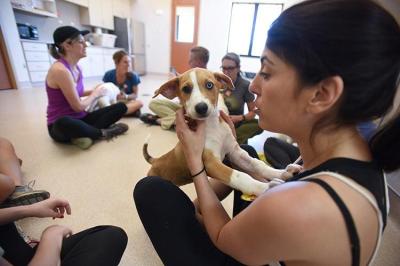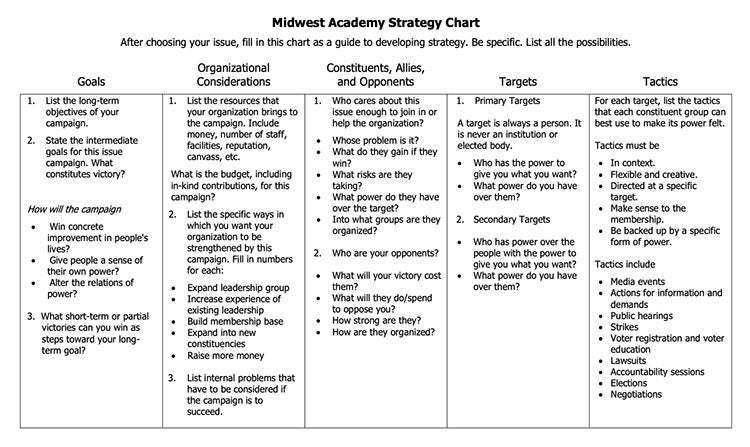
Hosting a 2025 Action Team Meetup
Note: This is chapter 5 of Best Friends Animal Society's Grassroots Advocacy Toolkit.
The goal of any team meeting is to build community and strengthen connections among people with shared goals and interests. We are stronger when we act together, and meetups are key components of creating and maintaining that unity.
By hosting or attending a meetup, you can:
- Connect with fellow community members who want to help dogs and cats
- Discuss the current lifesaving status of your community and determine what you can do to improve it
- Create a sense of excitement and inspire people to make a plan for the work ahead and even schedule a regular team meetup
Here are the steps for getting started:
- Contact Best Friends at action2025@bestfriends.org to let us know that you’re starting a local campaign. We can provide information and guidance and help answer questions.
- Prepare a sign-in sheet to collect attendees’ contact information.
- Print out a description of the campaign for each attendee. You can also hand out accompanying talking points and other resources as you see fit.
- Prepare an agenda and choose a facilitator. As the host of the meeting, you might be the logical choice for facilitator. But if there is someone else that you think should do it, ask whether they would be willing to play that role. You should also designate someone to take notes and circulate them afterward.
Choose a location and time for your meetup
You can host at your home or meet up at a café or other social place; libraries often have free meeting rooms.
Next, pick a time. After the workday ends is often ideal, especially if your team includes lots of diverse people with varying responsibilities and schedules. It’s important to keep dinnertime in mind, so keep the meeting to about an hour in length.
What to do at your first meeting
Before your first meeting, gather any materials you’ll need. Print a sign-in sheet and bring supplies for brainstorming, such as pens, paper, Post-it notes, or poster paper and a laptop.
Home starts with you
We suggest including the following items on the agenda of your first meeting:
- Make introductions.
- Explain the team purpose and campaign.
- Assess your community’s needs.
- Brainstorm about allies.
- Develop an initial strategy.
These activities are discussed in more detail below. You can choose to do some of them at your second meeting, and keep your first meeting focused on the first two or three. How you structure your meetings depends on the people involved and your community’s unique timeline. It might be better to keep the first meeting short, or it could be better to define your campaign more deeply right away. You decide!
Make introductions. Greet each attendee, make them feel welcome, and thank them for making the time to show up. Once everyone has arrived, give them an opportunity to introduce themselves, share why they’re there, and offer any other relevant personal info (e.g., whether they are new to advocacy or have been involved in similar campaigns).
Explain the team purpose and campaign. Review the purpose of the meeting, and explain why taking action for pets in your community is so important. Just remember to keep it short and sweet, so you have time for brainstorming and planning.
Assess your community’s needs. Use what you’ve learned from the pet lifesaving dashboard and elsewhere to frame your community’s needs. If you brought a laptop or tablet to the meeting, you might want to look at the dashboard information for your community as a group.
Discuss the animal advocacy “landscape” of your area. Here are some things to talk about:
- Are residents educated on animal welfare issues?
- Have there been related campaigns in the past?
- Are there any strong, organized groups already working on these issues?
- How can this campaign build on what already exists?
- What messages will resonate with the people in your community?
- What is the voting body in your community and what is its structure? (It is likely the city council, but some municipalities have other processes for voting on legislation, such as a town meeting or board.)
- How many votes do you need for your proposal to become law?
- What are the names and political affiliations of the members of the local legislative body?
- Based on what you know about them, whom might you expect to support your reforms? Who might oppose them? Who are the likely swing votes?
- If the members represent specific wards or districts, does your action team include people from each ward?
You might not know the answers to all these questions at this point. But write down what you do know, and make a team plan to find answers to the remaining questions.
Brainstorm about allies. Before a local government body will consider your reforms, you’ll need to build a strong, diverse coalition representing as many different interests as possible. To get started, spend some time brainstorming about potential allies in your community. Include your local shelters as a starting point. (This is a resource on how to engage your local shelters.)
Here’s an easy brainstorming activity:
- Give your group three different colors of Post-it notes. Then take a large sheet of poster paper, and divide it into quadrants.
- Ask the group to write on the sticky notes the names of organizations (one color), individuals (another color), and institutions (the third color) related to your campaign. This will help participants brainstorm about potential outreach targets.
- Label the lines on your poster paper with an x-axis (horizontal) and a y-axis (vertical).
- The horizontal axis represents the degree of solidarity a person or group might have with your campaign — in other words, how much they agree with you and support your cause.
- The vertical axis represents the relative power of a person or group — how much sway or influence they have and how much they can help or hurt your cause.
- Based on those criteria, have participants place their sticky notes along the two axes. When everyone is done, you’ll have your allies on the right side of the paper, your opponents on the left, and those who are neutral or uncertain in the middle.
- Your most powerful allies will be on the sticky notes in the upper right quadrant. Those are the individuals and groups you want to contact first. Then you can work your way down toward less likely or less powerful allies.
Develop an initial strategy. You can consider campaign strategy at your first meeting, or you can wait until your team includes a few more people. Either way, you should start to do this as quickly as you’re able because it will help focus all of your efforts going forward.
The Midwest Academy for Activists defines a strategy as “a method of gaining enough power to make a government or corporate official do something in the public’s interest that [they do] not otherwise wish to do.” A strategy is a means of building power to persuade a specific decision-making body to take a particular action. This definition, along with the Midwest Academy’s Strategy Chart, provides a good starting point for developing a strategy that will be successful in your community.
As you fill in your chart, use the information you collected while brainstorming about allies and assessing your community to start developing a strategy for your campaign. Completing the chart will help you go into further detail and think through the steps you will need to take.
At your next team meeting, take a few minutes to talk about what went well and what was most useful from the previous meeting. Take notes and refer to them when planning future meetings. This step is crucial for ongoing success and momentum.

